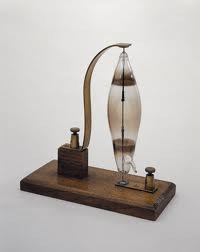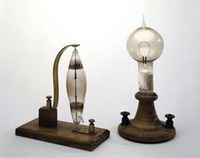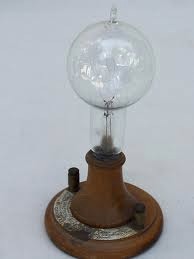Before the invention of the incandescent light bulb, other than the sun's light, men, women and children used candles, oil lanterns, and gas lamps to provide light. In the beginning of the 1800’s, an English chemist, Humphrey Davy, started the process in which light bulbs came to be. Davy used a high power battery to induce a current between two charcoal strips. With the current flowing through the two strips it created a vibrant light, which was the world's first arc lamp.
Warren De la Rue, is the man who attempted the first incandescent light bulb in 1820. He used a platinum coil in an evacuated tube and passed an electric current through it. It was a decent design and it was able to produce an effective light, although the cost of platinum made it unrealistic to mass-produce.
In 1875, Thomas Edison and Joseph Wilson Swan, both independently, came up with very practical light bulbs. They lasted about 13.5 hours. In 1880, Edison improved his design and this time he used a bamboo-derived filament, to replace a cotton filament and that lasted up to 1200 hours.
Since 1880 there have been several improvements to the light bulb to make it more efficient, for example in 1898, Karl Auer tried the metal osmium to see if he could make the light brighter. In 1903, Siemens and Halske worked with tantalum to see if they could make an even brighter light. These two metals we chosen because of they can operate at higher temperatures and have longer life spans.
In 1906-10, General Electric Company and William Coolidge worked with tungsten to form stronger coils in the bulbs. It also has a very high melting point thus it can be heated until it is glowing white hot, producing very bright bulbs.
In the 1920's, the invention of the first frosted lightbulbs appeared, as did adjustable power beam bulbs for cars. The twenties was also when the first neon lights became available.
The 30's were a time when photography really shined. They saw the invention of the little one-time flashbulbs! Future Americans in the 21st centery really benefit from this decade as fluorescent tanning lights were created as well.
The major light bulb invention in the forties was the first "soft light" bulbs.
As for the 1950's quartz glass and halogen light bulbs were produced.
A few decades later, in the eighties, low watt metal halides were created.
In the last decade of the 20th century, long lige bulbs and compact fluorescent bulbs were created, as were muiltple colored glass bulbs.


